The monumental Academy of the Sword, by Girard Thibault, is one of the most detailed fencing treatise ever published. The fencing style it describes is a variant of La Verdadera Destreza, the heavily mathematical Spanish style founded by Carranza and then used up to the 19th century.
There are a number of original departure from the Spanish mainstream line in Thibault’s work. One of the most obvious is the way he advocates to grip the sword. This has became a topic of reflection for me as soon as I tried to pick my first training rapier in 2006, and it is high time for me to write my current conclusions.
Matthew Howden has written an article about exactly this. It contains a great amount of citations and illustrations from Thibault’s work. I disagree slightly with some of the points made though; basically Howden describes Thibault’s gripping method as composed of two distinct grips that you transition to and from, whereas I consider it revolves around one primary grip which is sometimes altered depending on the situation. I would also argue that Howden’s second grip is not used that frequently in Thibault, with intermediate forms being more common.
I shall start by describing the common rapier grip as a point of comparison, then I will describe Thibault’s grip, its properties and its alterations. Finally I would like to discuss what happens when you try that gripping method with a rapier that has a knucklebow, unlike Thibault’s prescribed hilt. This is a question of interest for anyone wishing to take a seminar or starting a study of Thibault without investing in a specific sword.
The common grip
The majority of rapier authors (outside the Germanic area) illustrate or describe a grip which lines up the edge plane with the radius-cubitus plane, the knukles covered by the knucklebow, the index finger looped inside the forward arm of the hilt over the ricasso. The back of the hand is covered by the outer guards, while the fingers on the other side are covered by the inner guards. The knucklebow, if there is one, protects the finger at the front.
When one delves in depth into the details of gripping, there are several variants that could be identified, depending on thumb position, where the handle and pommel exactly lie, etc. Here are several examples from Lovino, who I consider to have the best (clearest, most correct) illustrations of this family of grips:
- The classic form of the common grip
- An extended variation, putting the pommel in the channel of the wrist
- Plate II shows the outer and inner guards
- A high guard, showing the thumb joining the fingers instead of pointing on the ricasso
- Also a high guard, but with the arm extended forward, the thumb goes back on the ricasso
- Here the thumb stays on the ricasso despite the angulation
It is worth noting that the complex hilts on rapiers apparently developed around precisely that grip form. There are several pieces of evidence. The first one is he position of the knucklebow, obviously. Some hilts have tighter inner guards, which fit the asymmetry of the hand:
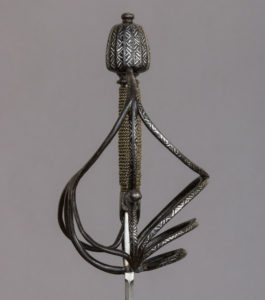
Finally, when a thumb ring is present, it is on the inner side. Although you could get creative about how you grip these, the thumb ring seems to limit the possibilities, or at the very least indicate a default grip.
Thibault’s grip
The combination of image and text is relatively clear:
THE WAY TO HOLD
the sword in hand, to practice our lessons.The last point which is represented on this table about the sword is the way to hold it in the hand, majorly different from the habit of others. Because as expressed at the bottom by these two numbered swords, we put the index in the guard from above the outer quillon, around the shoulders of the blade, and the thumb on the other side, above the inner quillon, or against it, from inside the guard as well, with the rest of the fingers tightly wrapped around the handle, in such a way that the pommel is firmly placed in the channel of the wrist, and the quillons horizontal, one next to the other.
It is absolutely necessary for anyone seeking to follow our Practice to grip the sword in this manner alone, and not in any other way whatsoever: of it alone proceeds the certainty of a good portion of all the operations, and in it are founded all the most noble feats of thrusts in attack and in defence; the confidence thereof is principally rooted in the situation of the cross and the strength of the blade held as described before.
Girard Thibault, Académie de l’Espée, Book I, Table I, p.21-22
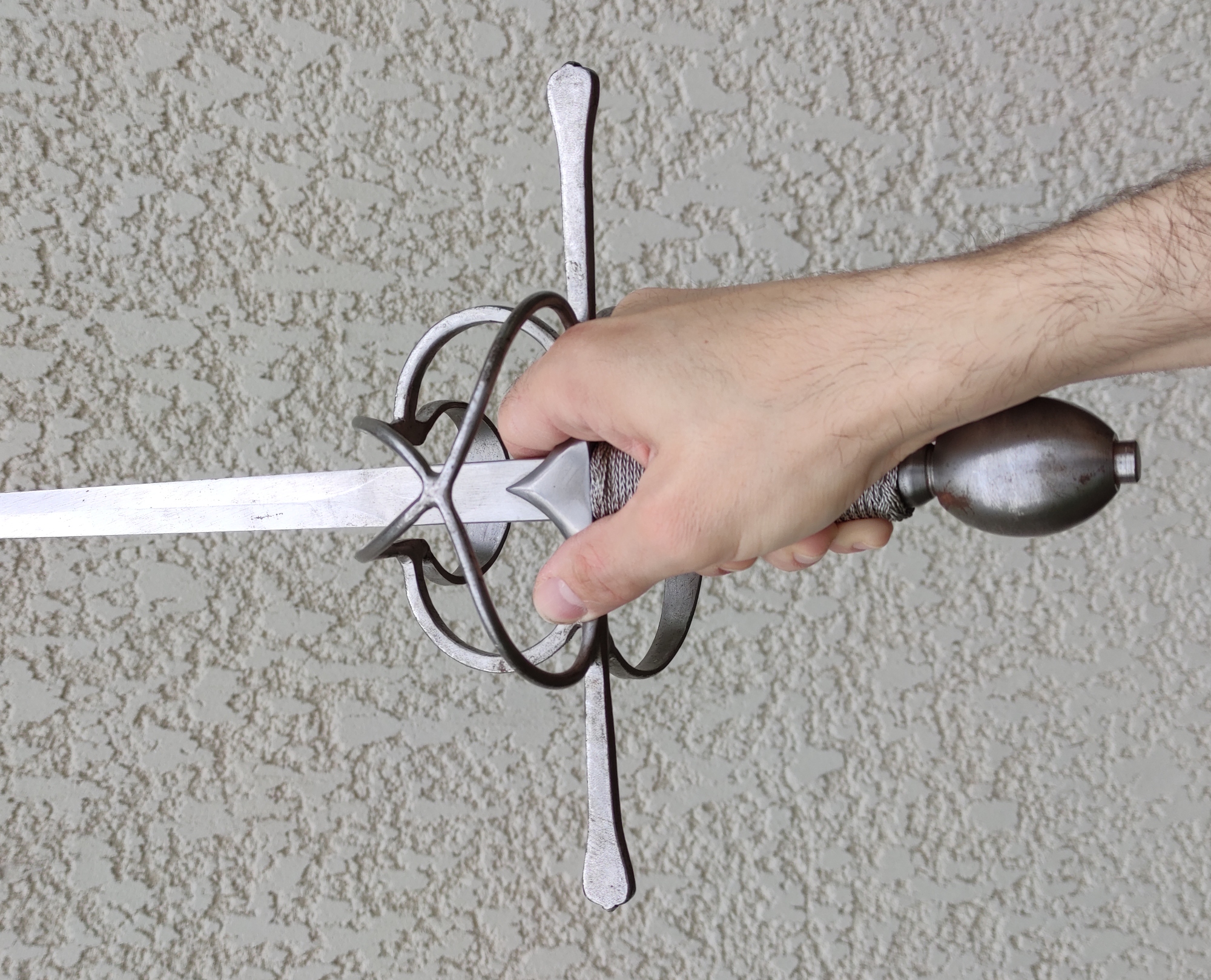
Thibault’s grip is what happens when you take a common extended grip, with the pommel in the channel of the wrist, but rotate the blade about 90 degrees clockwise (for a right-hander). This puts the true edge to your left, inner guards up, outer guards down, quillons horizontal. The thumb is on the top of the inner quillon, but it is not just its tip touching, it is entering into the guards. The palm is facing left and a little bit down.
This is counter-intuitive because it changes the ring that the index finger passes through: instead of being the one on the true edge side, it is on the false edge side. It is a detail which is important but easily missed because Thibault’s prescribed hilt form is roughly symmetrical, and you need good knowledge of the architecture of rapier hilts to notice it. Using Norman’s typology, the prescribed hilt is composed of an outer guard of type 43 (two parallel side-rings) and an inner guard of type 25 (two tangential curved bars forming a cross), and Thibault’s illustration is unambiguous regarding which one is up. Wallace Collection A533 is the closest I have seen to a Thibault rapier in a museum.
Another note is that in his instructions about how to draw the sword, Thibault purposefully uses a hand position that sets exactly this orientation, with consistent illustrations. The written instructions say to
embrace the outer quillon with the index, from inside the guard
Girard Thibault, Académie de l’Espée, Book I, Table III, A&E
Here ‘outer quillon’ refers to the final orientation of the hilt, but the important bit is ‘from inside the guard’. Unfortunately these are among the smallest plates in the book, but they show quite clearly that the hand is oriented with the outer guard opposite the palm right from the beginning. The sword is worn just as usual, with the outer guards away from the body:
Arguably this makes the whole affair of drawing a long blade a little bit more complex than it already is. Several possible explanations for why Thibault elected to pick this exact orientation will be discussed in the sections below.
Thibault’s grip is original in the fact that the thumb and index go over the cross on the same side. He is as far as I know the only master explicitly advocating such a grip. However the engravings in Marozzo’s Opera Nova might depict the same in places, most clearly on the plate showing guardia d’intrare with the single sword. It is unclear whether this is an illustrator mistake or something representative of Marozzo’s practice; the engravings are not of such a high quality that error could be ruled out, and there is no corresponding indication in the text itself. The swords shown are also without a knucklebow or visible inside and outside, so we cannot be sure it would have been oriented in the same way.
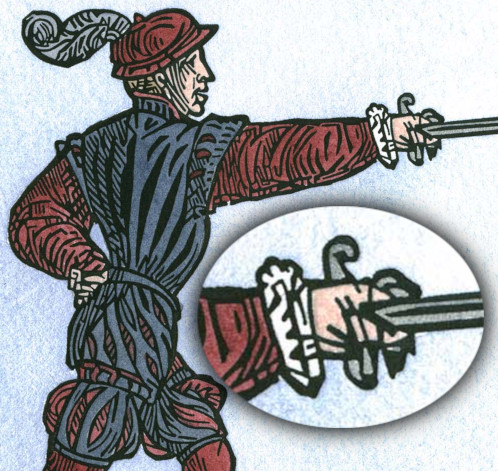
Thibault’s grip might be related to forms of thumb grips, where the thumb is extended on the flat of the blade. But it combines this with passing the forefinger through the rings, which is not standard, and the thumb is not on the blade but besides it.
Properties of the grip
Advantages:
- Puts the quillons in the horizontal plane while keeping the arm position neutral. This lets you use the quillons to control and hamper blades on either side, which is where action is most likely to take place. You can raise them or lower them freely on either side
- Uses the maximal extension of the sword in line with the arm without stressing the wrist (this is primarily due to the pommel’s position, and is shared with extended variants of the common grip)
- The strong plane of the sword (edge-edge) is perpendicular to the strong plane of the arm (the one containing radius and cubitus, roughly): you add strength to weakness
Drawbacks:
- Is not quite as secure as the more common grip – cuts would be possible but the edges are aligned with the space between fingers and palm, the thumb and index do not encircle the handle
- Cannot apply or resist to a strong force. In particular it is unsuited to most forms of parries : you add weakness to strength!
- Depending on the quillons shape, it can be a little bit uncomfortable to hold, because of the quillon deep between the index and middle finger
Thibault was clearly aware of these, and that leads him to alter his grip in many actions, mainly for cuts, but also to achieve a different angulation of blade and quillons.
Altering the grip
The article cited in the introduction describes this as changing grips, but I consider it more appropriate to call this altering the grip, because Thibault never explicitly details another way to grip that one should be transitioning to. Invariably, Thibault’s descriptions simply point out that the thumb needs to change sides, and that the orientation of the cross should change. This does not entirely specify the final grip that is assumed, and it could conceivably be different according to the situation. We are left to determine the exact grip from the pictures and our experience.
For cuts
There is relatively clear general advice on how to deliver cuts in Table XVII:
Similarly it must be noted, in all situations where cuts are at issue, whether estramasons or reverses, for those that grip the sword in our manner, that when one raises it up, in order to turn it around above the head, it is necessary to allow the thumb, which rests above the inside quillon, to slip underneath it, so that the outside quillon is vertical and the blade falls with the cutting edge first. Thereby the aforementioned estramasons and reverses will be rendered more easy to execute.
Girard Thibault, Académie de l’Espée, Book I, Table XVII, circle 7
However the illustrations are not always quite as clear as that. We have instances of cuts that would go flat (where the text specifies to use the edge). There are depictions of reverses without a grip alteration. It might be that the artists were facing difficulties posing dynamic actions like this and simply got it wrong.
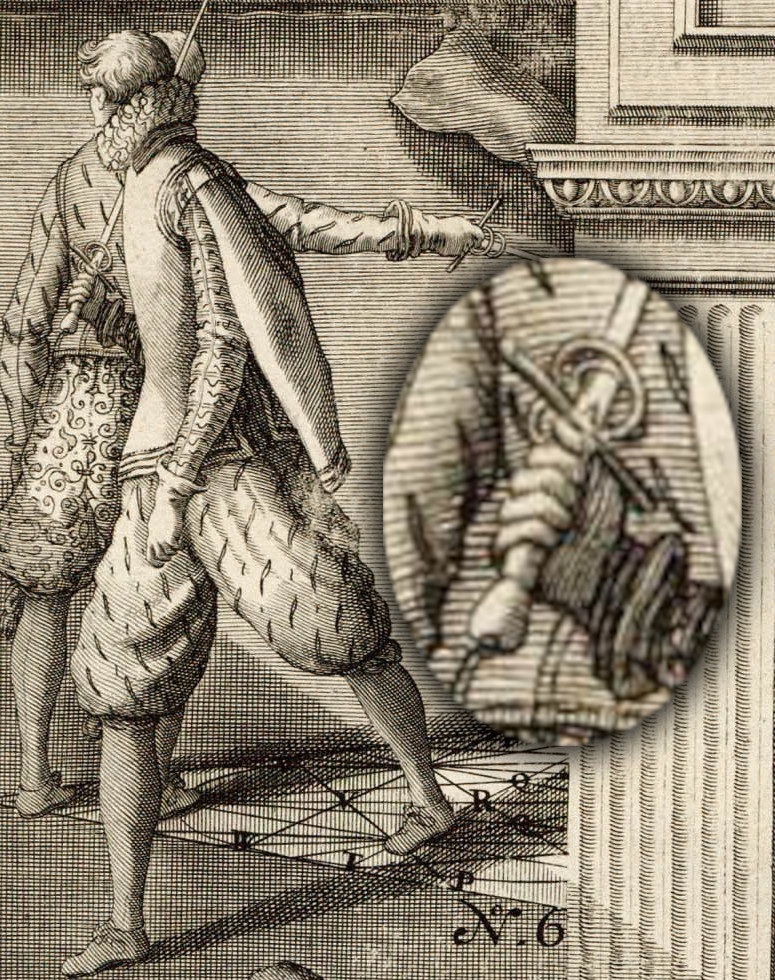
Of note is the fact that many of Thibault’s cuts are thrown from somewhat unusual positions, and more than once with a bent arm. Other instances, on the contrary, are thrown with an extended arm and blade. In my limited experience, there is rarely a need to transition to the full ‘cutting grip’ as defined by Matthew Howden, and it is in fact harder to throw either a bent-arm cut or a fully extended cut with such a grip (the position illustrated in plate XXIV shown above is impossible to reach, for example).
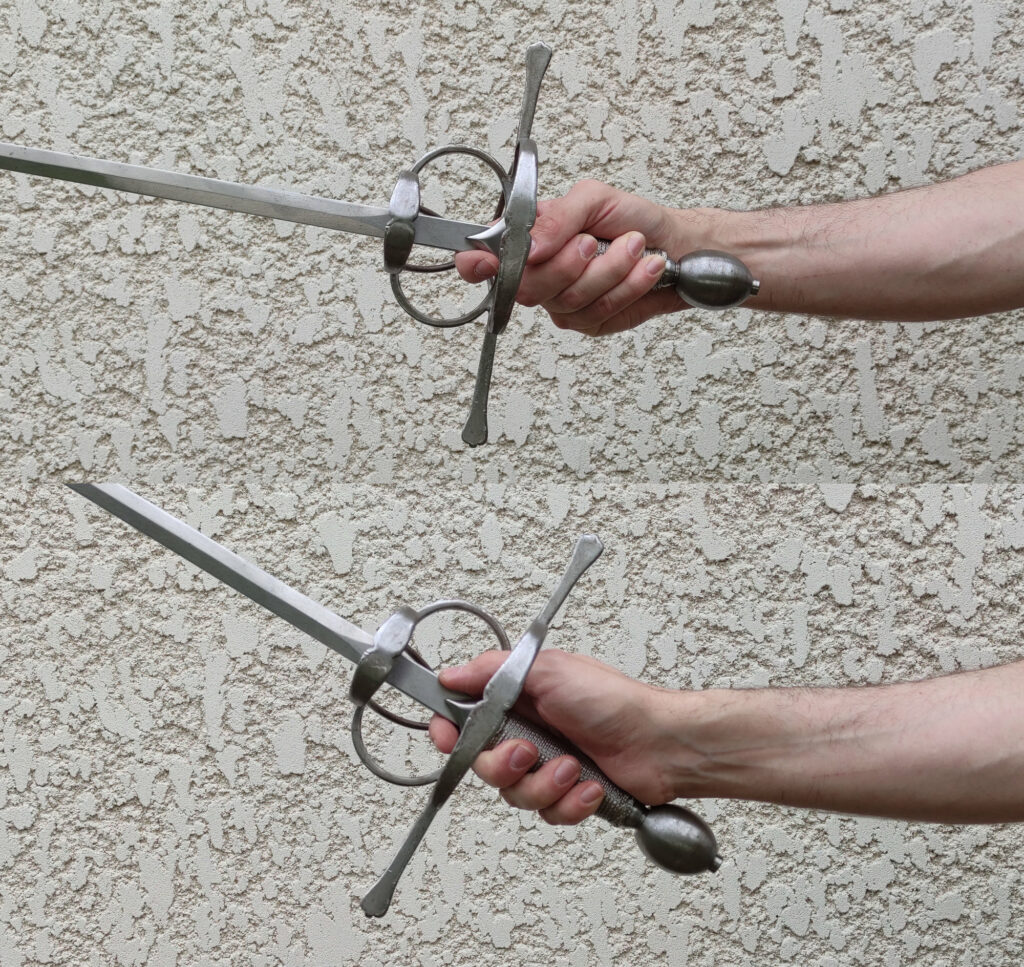
Was Thibault aware of Howden’s ‘cutting grip’? Clearly yes, because it is illustrated in some instances. Perhaps the clearest is on Book I, table XXIX, circle 4:
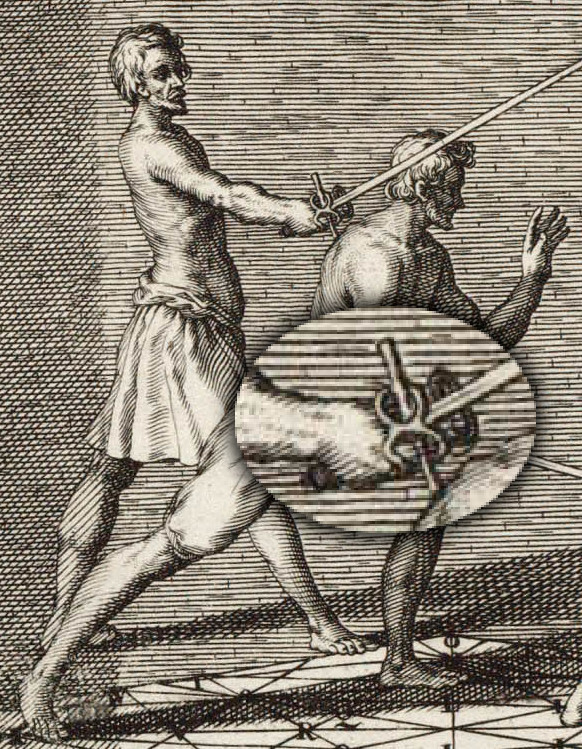
It is also adopted by the opponent. One clear example is in Book I, Table XXX, circle 6, and several other can be seen in Book II in the tables dealing with sword and companion weapons (albeit without the index over the quillon). However, it is shown for fighters using the common grip, not transitioning into it from Thibault’s grip.

Cuts are somewhat common in Thibault’s instructions. This is indisputably the most frequent reason to alter the grip.
On a parry
Thibault generally does not parry cuts in the usual way, i.e. by interposing one’s sword into the cut path. Rather, he advises to bind early against cuts and redirect them away. However, the opponent is sometimes said to be parrying, and in one case clearly does so with a grip change (Table X, circle 5).
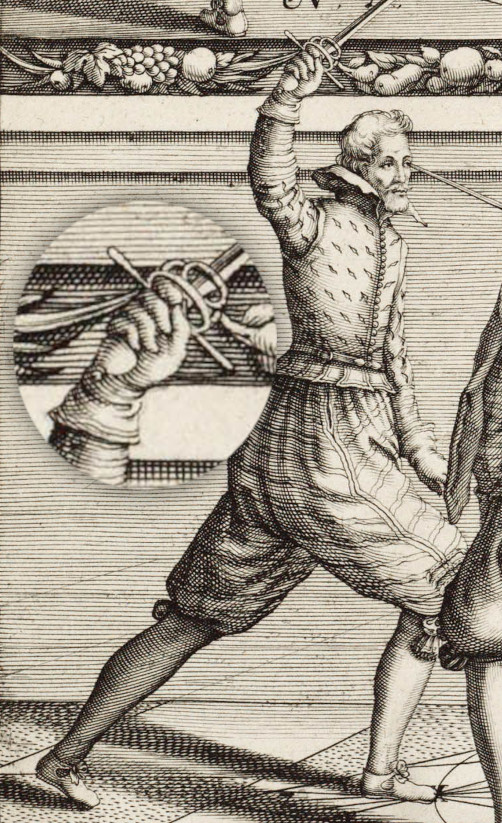
To cover the blade
Against opponents with the hilt high and the tip low, Thibault alters his entry and his grip to cover the blade without losing too much freedom of motion. This brings the quillons to the vertical while the sword is angled over the opponent’s blade. Where Thibault ordinarily targets the head as the primary target, this entry rather leads to thrust to the body. The canonical depiction of this position is in Book I, table XIII, circle 1:
However, there is another very similar motion in Book II, Table XI, circle 9:
This latter one is particularly valuable because the projections of the swords on the floor diagram clarify the angle that the sword makes over the opponent’s blade (highlighted in red). The arm is extended towards the opponent, but the blade is sloping to the left: this implies some sort of angle in the wrist. The pommel is still in the channel of the wrist. The quillons are brought to the vertical. It is a different grip compared to the previous examples for cuts or parries: such an angle of the blade to the inside is not useful in these situations, but here it is critical to cover the blade.
As can be seen from these examples it is difficult to be absolutely certain of the altered grip position and the solution could be different on a case by case basis. At that stage I consider what Matthew Howden calls the intermediate grip a certainty with much evidence going for it, but I’m not convinced what he terms the cutting grip is absolutely called for all that often: Thibault seems extremely keen on keeping the pommel in the channel of the wrist. Even the intermediate grip could have variations: a bent-arm flicking cut and a covering of the blade are not a cutting grip, yet they are also different from one another.
What if you have a knucklebow?
Thibault’s grip is always a problem for rapierists with a budding interest in his text. The vast majority of commercial offerings have hilt styles involving a knucklebow, be they cup hilts, swept hilts, or pappenheimers. Since investing in a new hilt or sawing off the knucklebow of one’s rapier is often not an acceptable solution, one has to figure out how to use Thibault’s grip with a knucklebow. This problem is even more pressing in situations such as workshops at events, where attendants might only have a passing interest in Thibault!
Thibault’s grip has some superficial similarity to a second guard: quillons horizontal, index in outer ring. This can lead some people to propose second guard as an alternative, only switching the thumb from one side of the quillons to the other. However this is not in fact equivalent to Thibault’s grip: in particular, the arm ends up on top of the pommel, instead of to the side. It is also quite uncomfortable to hold and forces the thumb out of a gripping position, so ends up being much weaker than Thibault’s proposition.
Having observed that Thibault’s grip puts the inner hilt to the top, it means the knucklebow would naturally end up on the inside opposite the palm. It does not interfer at all with the grip – although it will not be useful either. The majority of Thibault’s actions work from this grip and can therefore be made without the slightest problem on any proper rapier. It is possibly an intentional feature: the vast majority of surviving rapiers do have a knucklebow, and this seems to be especially true in the 17th century. It would have made very little sense to design a swordsmanship system around a grip that you absolutely could not use unless you have your special rapier. This is in my opinion one possible explanation for the specific hilt orientation Thibault picks right from the draw.
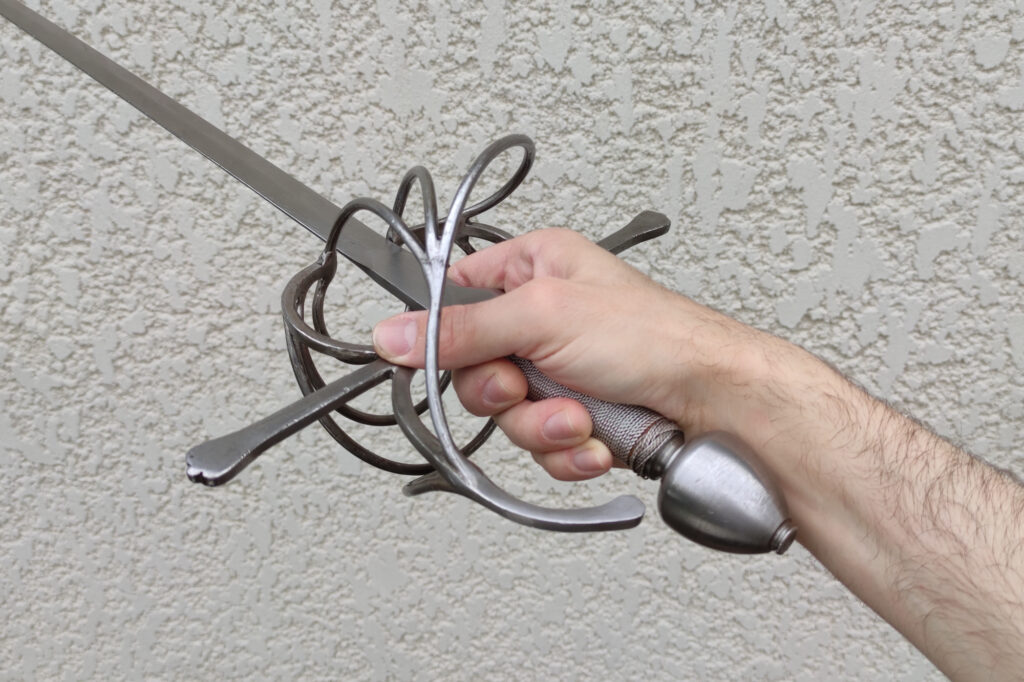
However even in this position the knucklebow restricts the possible grip alterations. Its net effect is that you cannot use forms of the common grip which put the wrist fully on top of the pommel. The effect is worse if you have an inner guard which loops to the knucklebow as it does on my swept hilt here.
Now the question becomes one of interpretation: how often do you need to make such a grip? My personal take is, not that often.
The majority of cuts can be done in the intermediate position, even with power. You need the thumb to switch side to secure the grip, but you do not need the skeletal alignment with the arm’s bones because you do not press on the target, instead you let the speed of the blade do the work. Some of the cuts pointed out before might need a marginal alteration of angle or arm position to be made.

In many instances, the overall position does not lend itself to putting pressure on anyway. Perhaps the clearest examples are on the already mentioned Table VI, circles 6 and 7, where cuts are used with a bent arm and in the former case a rather twisted body position.

The only certain case that I have seen that cannot be handled comfortably with a knucklebow is the blade cover discussed earlier. Indeed with the blade pointing to the inside and the cross vertical, it is impossible not to cover the pommel with the wrist, right where the knucklebow would be. Presumably in this case you would have to sacrifice the cross orientation, as either bending the arm, breaking the wrist or not covering the blade seem to critically hamper the desired effect of the technique.

The conclusion is that although the greatest portion of Thibault’s system can be practiced even with a knucklebow as long as you hold the rapier in the proper orientation, there are certain parts that you would have to at least adapt. People new to the system will have more than enough material to explore even with a knucklebow, but at some point Thibault’s hilt becomes necessary.
As a final word, let me offer my own very subjective opinion about Thibault’s gripping method. I must stress that this is not based on a lot of training, hard as it is to come across other persons interested in practicing Thibault’s exercises…
In freeplay I try it every once in a while, but it has never proven decisive for me. It is hard to remain close to Thibault’s actions in a modern setting, and as the play strays further and further the disadvantages of Thibault’s grip become more striking than its advantages. Specifically, as a not-too-good fencer, I do end up having to make these reflexive, almost spastic parries which the grip pretty much does not work for. The necessity to keep fine finger dexterity for grip transitions, even in the middle of rapid, stressful actions, is definitely a hurdle.
It is very possible that someone more trained in Thibault’s actions might find more benefit in that grip. I have just not reached this level as of now.
One thing is certain: that form of grip was quite original at the time, and seems never to have been adopted elsewhere, even in other Destreza treatises which describe actions that are quite close to Thibault’s. Neither did it have any obvious posterity. Based on my experience and this observation, I ended up doubting that this grip is the game changer that Thibault describes.
With that said, analyzing and practicing that grip has been very informative for me. It has helped me identify and focus on the important elements of pommel position, thumb use, alignment, etc. Even if the practical application is not so beneficial, this understanding certainly has been!

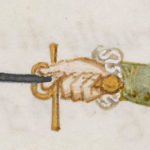
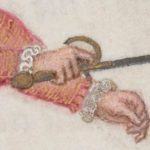


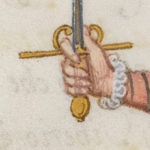

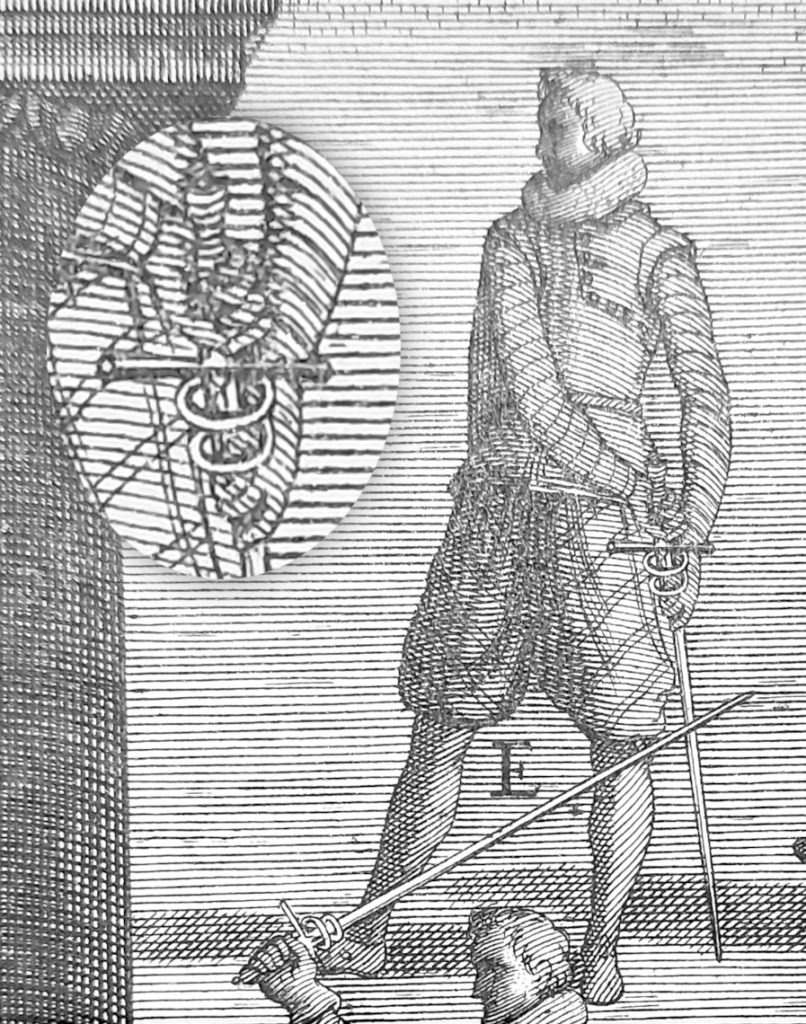

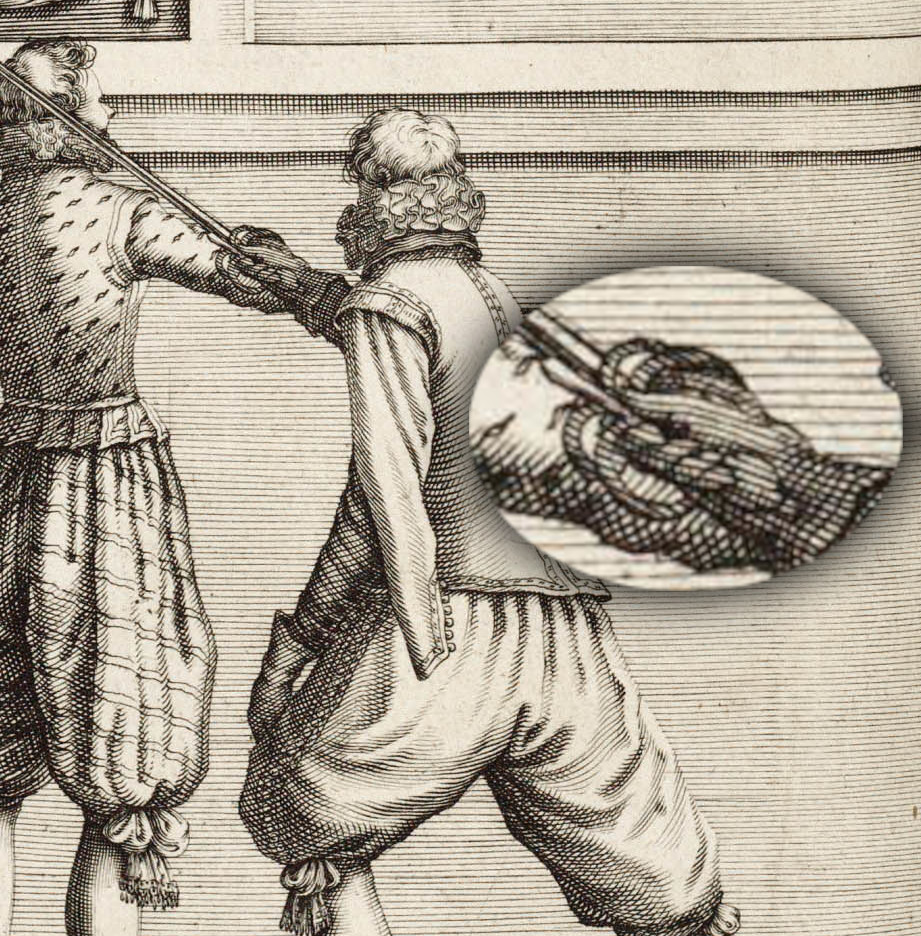
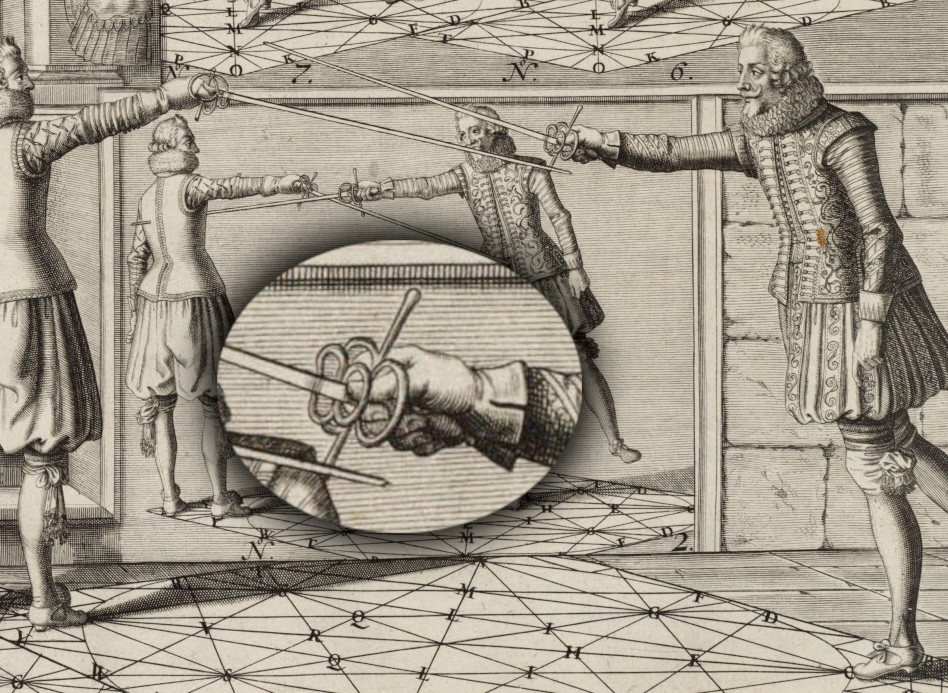
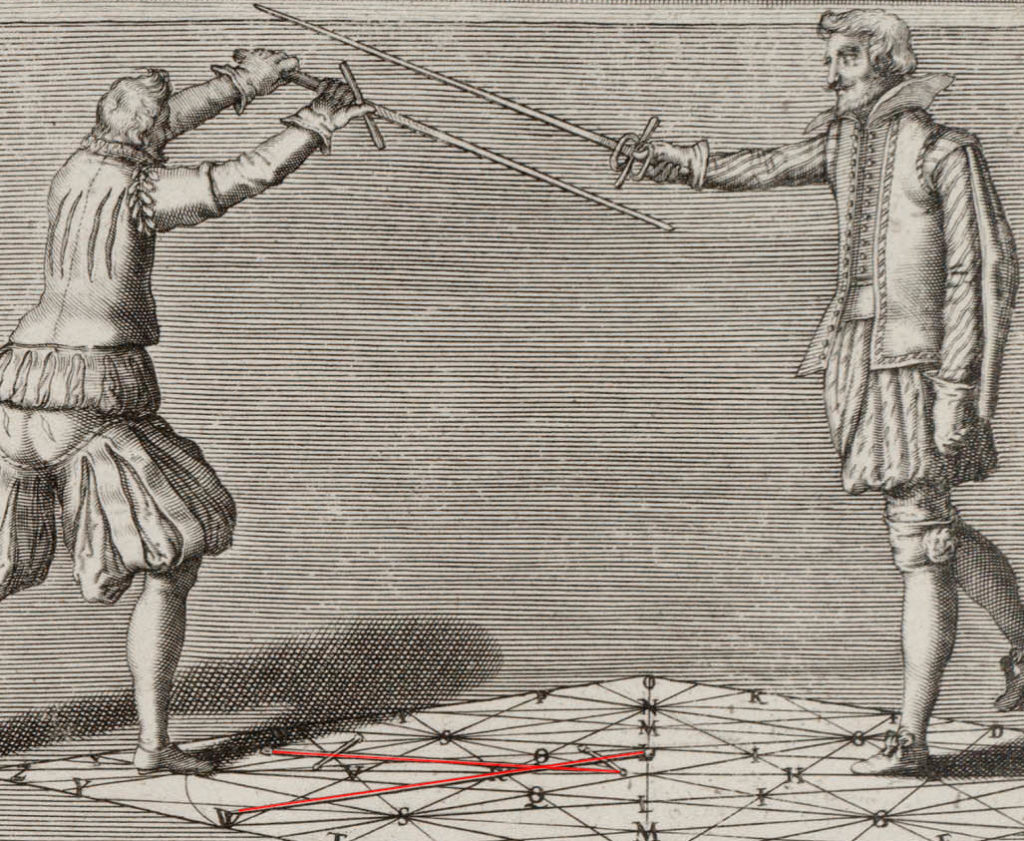



You might want to consider joining the ‘Reading Thibault’ FB group.
Will do!
Superb article!
Do you mind if I talk about some things I’ve noticed in my Thibault work? Because I’ve run into the various things you mention, and found various resolutions and things to note which seem to hold true to the book. And I would love to share them, but don’t wish to be presumptuous about it.
Thanks for your appreciation!
Feel free to share anything… Especially if it’s related to gripping methods!
I am sad that this doesn’t rank in the google search engine or other search engine. Great site that you have. It seems like you have been fencing for a while. What are the main systems that you practice? Do you go to a club?
Thanks!
On the practical side, I’ve done foil fencing as a kid, then kenjutsu, then canne de combat, then judo, and I might take up sport fencing again one of these days.
Time’s too short for me to go to a HEMA club currently. I just read a lot and train at workshops, mainly Italian rapier/sidesword.